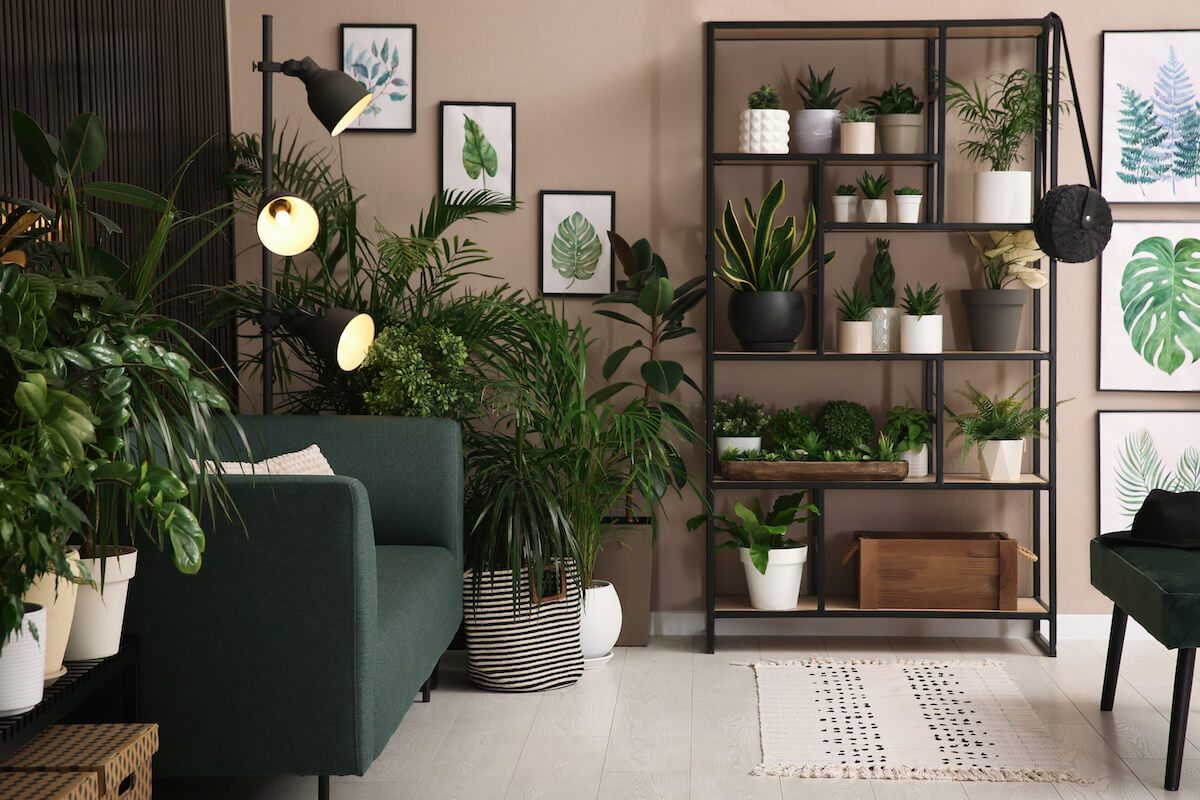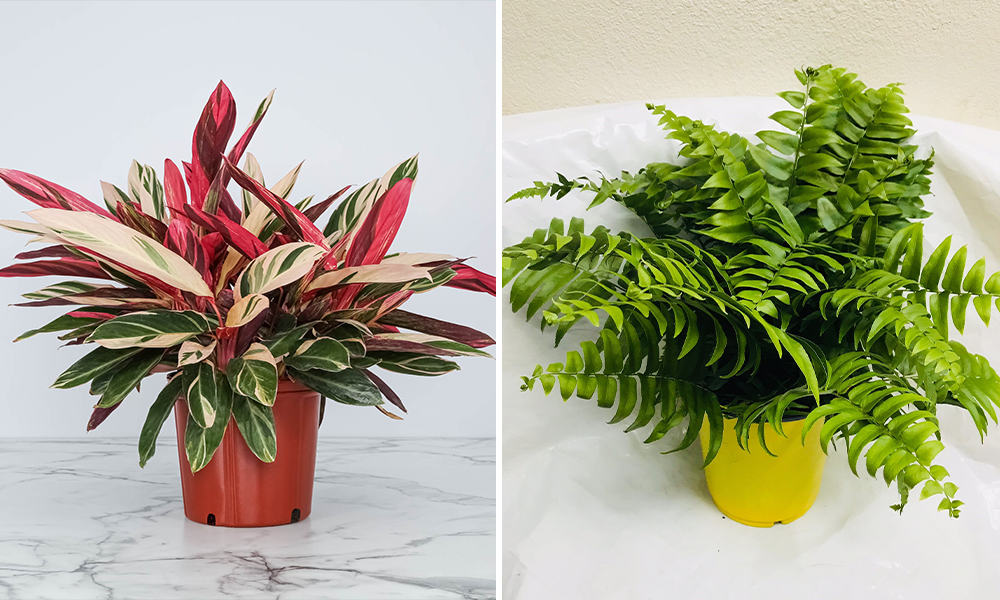Best Low-Light Indoor Plants That Thrive with Minimal Sunlight
Best Low-Light Indoor Plants That Thrive with Minimal Sunlight
Blog Article
Transform Your Home With Beautiful Low-Light Indoor Plants and Their Benefits
Incorporating low-light indoor plants into your home can substantially improve both the environmental and visual high quality of your living rooms. These plants, which flourish in dark conditions, offer not just as attractive elements but also as natural air purifiers, making them ideal for city dwellers or those with restricted sunshine exposure. As we explore the different sorts of low-light plants and their benefits, you might find unexpected methods to incorporate them into your home that can transform your surroundings in methods you might not have actually prepared for.
Advantages of Low-Light Plants
Low-light plants offer many benefits for indoor environments, making them an exceptional option for both amateur and skilled gardeners. Among the main advantages is their versatility to low-light conditions, permitting people to improve their living areas without the demand for comprehensive sunlight exposure. This particular makes them ideal for houses, offices, and various other locations with restricted all-natural light.

Additionally, including low-light plants right into home decoration can raise the visual charm of a space. Their rich vegetation and differed textures produce a soothing atmosphere, contributing to overall health. Lastly, the visibility of plant has been connected to reduced stress and anxiety degrees and boosted performance, making low-light plants a practical selection for boosting both physical and mental health and wellness in indoor settings.
Top Low-Light Indoor Plants
While many interior plants thrive in intense light, a number of varieties are especially fit for low-light problems, making them optimal for various interior spaces. One prominent choice is the Serpent Plant (Sansevieria), understood for its striking upright leaves and resilience, needing minimal care. One more superb option is the Pothos (Epipremnum aureum), which includes heart-shaped leaves and can trail wonderfully from hangers or racks, prospering in reduced light and adding a rich touch.
The ZZ Plant (Zamioculcas zamiifolia) is commemorated for its shiny fallen leaves and ability to endure overlook, making it best for active way of livings. The Tranquility Lily (Spathiphyllum) not just tolerates reduced light however additionally produces stunning white flowers, boosting any kind of space's aesthetic.
For a special touch, consider the Cast Iron Plant (Aspidistra elatior), which without a doubt meets its name, flourishing in the darkest corners of your home. The Chinese Evergreen (Aglaonema) offers a variety of fallen leave patterns and colors while being exceptionally flexible in low-light problems. These plants not just beautify indoor environments however also add to air filtration, enhancing your living space.
Care Tips for Low-Light Plants

Sprinkling techniques are important; these plants frequently favor slightly completely dry problems. Overwatering can result in root rot, so ensure that the leading inch of soil is dry prior to watering once more. Usage pots with drain holes to enable excess dampness to leave.
Moisture is one more important variable. Several low-light plants, such as brushes and tranquility lilies, advantage from higher humidity levels. To raise moisture, think about misting the fallen leaves or placing a tray of water near the plants.
Fertilizing must be approached with caution. Throughout the growing season, utilize a weakened, well balanced liquid plant food each month to support development, however avoid fertilizing during the inactive cold weather.

Imaginative Ways to Show Plants
Indoor plants can function as captivating prime focus in any space, improving both aesthetic appeal and atmosphere. Innovative displays can boost the aesthetic effect of low-light plants, my website making them an essential component of your home style. One reliable method is to use tiered plant stands, which permit you to showcase numerous plants at differing heights while optimizing floor room.
Hanging planters are another ingenious option, developing a sense of depth and attracting the eye upwards. Consider macramé hangers or wall-mounted racks to present a special texture and design.
For an extra structured approach, usage geometric terrariums or glass containers to house your plants, adding a modern-day touch to your interior yard. You can additionally repurpose classic products, such as teacups or wood cages, for a diverse screen that reflects your individuality.
Enhancing Home Atmosphere With Plants
Incorporating low-light plants right into your home not just improves Homepage visual allure however additionally adds dramatically to the general atmosphere. These plants work as all-natural design components, introducing a sense of harmony that can change any type of area. The visibility of greenery promotes a soothing ambience, which is particularly useful in high-stress atmospheres such as home offices or living spaces.
Low-light plants, such as snake plants, pothos, and ZZ plants, are not only aesthetically pleasing yet additionally boost indoor air quality by filtering pollutants. This twin feature boosts the ambiance better, producing a healthier living room (Best low-light indoor plants). The strategic placement of these plants can also affect the assumption of area; as an example, high plants can attract the eye upwards, making ceilings appear higher and rooms a lot more roomy
Additionally, varying appearances and shades of foliage add depth to indoor design, permitting innovative expression in home designing. Whether positioned on racks, in edges, or as centerpieces, low-light plants can raise the state of mind of any type of area. In recap, including these plants right into your home is an efficient method to foster a warm, inviting atmosphere while enjoying the advantages of boosted air quality and aesthetic versatility.
Final Thought
Integrating low-light interior plants right into home environments provides countless benefits, including improved visual charm and enhanced air high quality. These durable plants, such as the Serpent Plant and Tranquility Lily, call for minimal light and upkeep, making them ideal for varied lifestyles.
While many indoor plants grow in intense light, a number of species are specifically fit for low-light problems, making them suitable for numerous interior spaces. One reliable technique is to make use of tiered plant stands, which permit you to showcase numerous plants at varying heights while optimizing floor room.
Low-light plants, such as snake plants, pothos, and ZZ plants, are not just cosmetically pleasing however additionally boost interior air top quality by filtering system toxins. Best low-light indoor plants. The critical placement of these plants can likewise influence the understanding of room; for instance, high plants can draw the eye upward, making ceilings appear read this greater and areas more large
These resistant plants, such as the Snake Plant and Peace Lily, require minimal light and maintenance, making them appropriate for diverse way of livings.
Report this page